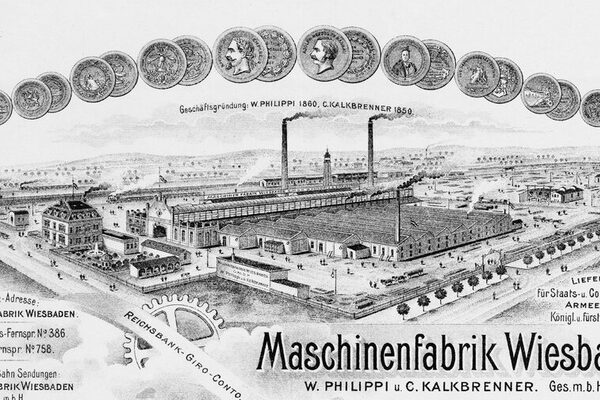Maschinenfabrik Wiesbaden GmbH
In 1860, Wilhelm Philippi founded a locksmith's shop in Dambachtal near Wiesbaden, which was taken over by his two sons after his death in 1877. In 1894, they acquired a 25,000 m2 plot of land at Dotzheim station and built a new factory here, which operated as "Maschinenfabrik W. Philippi" from October 1895 and as "Maschinenfabrik Wiesbaden GmbH" from January 1, 1899 following the merger with Christian Kalkbrenner 's stove and iron construction company. Three "departments" designed and built electric passenger elevators, stage machinery for theaters and other lifting devices, iron constructions, wrought iron work such as staircases, façade, roof and bridge constructions, boilers and reservoir tanks, central heating and ventilation systems, steam and hot water pipes for industrial purposes as well as bathing facilities. By 1911, the number of employees had grown to over 600.
The company produced the entire stage technology for the Wiesbaden theater as well as the heating systems for the new municipal hospitals in Schwalbacher Strasse. During the global economic crisis during the Weimar Republic, the company was able to avert imminent bankruptcy. After the company was taken over by the businessman Wilhelm Staben, Maschinenfabrik Wiesbaden GmbH was converted into a stock corporation in 1936. The company continued to develop positively after the Second World War. In 1959, the AG was again converted into a GmbH.
In the 1970s, however, the company ran into financial difficulties. After the house bank cut the credit line, Maschinenfabrik Wiesbaden became insolvent and went bankrupt in 1975. 700 employees lost their jobs.
